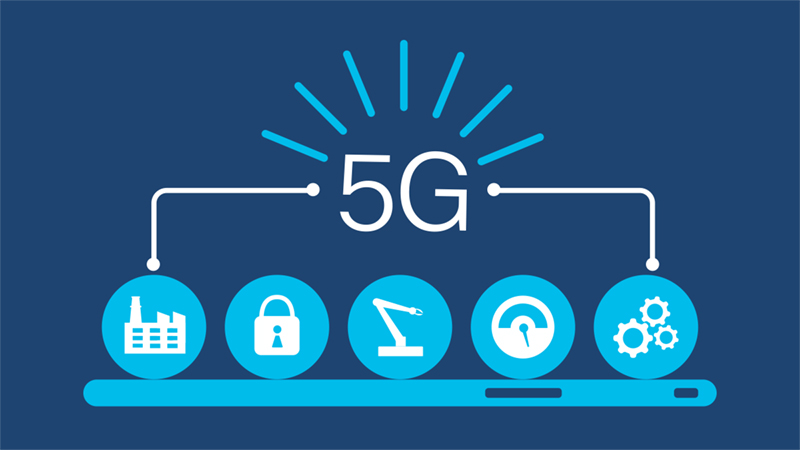We all look forward to the day we can play immersive, virtual-reality games on our 5G phones with ease and speed.
But 5G’s advances in bandwidth and latency will go far beyond the consumer experience. It’s also a potential game-changer for enterprises, manufacturers, universities, hospitals, the public sector and beyond.
For many of these organizations, a private 5G network will be the way to go, often in tandem with Wi-Fi 6. All will want to step up to the next level of digitalization and transformation — for example, by realizing the full potential of Internet of Things technologies. And by enabling them to build and easily reconfigure infrastructures to meet their needs and their customers’ demands, while enabling heightened security, private networks will be critical investments.
This next leap in mobility is driven by the latest advances in networking. The network as a system is better, faster, and smarter — capable of processing, responding, and reacting in milliseconds. And this evolution of the underlying network backbone will be a key reason why the impact of 5G will be even bigger than the transition from 2G to 3G, or 3G to 4G.
We believe the Internet for the Future really begins with the premise of 5G.
Jonathan Davidson, SVP/GM for Cisco’s Mass Scale Infrastructure Group
“We believe the Internet for the Future really begins with the premise of 5G,” said Jonathan Davidson, SVP/GM for Cisco’s Mass Scale Infrastructure Group. “We can address the digital divide amongst underserved communities and businesses, as we reach unconnected people and things. And we’re working across providers, enterprises, and industries around the world to help them understand how they can deliver those 5G capabilities to private networks as simply as possible.”
Here are five reasons to consider a private 5G network:
1. 5G’s ready for IoT, AI, VR, predictive maintenance and whatever else you throw at it. All those emerging technologies have shown tremendous promise for years. But 5G’s speed and low latency will help unleash their full potential. Smart factories are but one example. By enabling everything from ubiquitous IoT sensors to super-smart, mobile robots, next-gen wireless could upend manufacturing models that date back to Henry Ford. Instead of parts moving on a conveyor, for example, free-roaming robots — untethered by fiber cables — could roam freely across a plant floor, moving to wherever they are needed. All while swarms of IoT endpoints generate deluges of data, enabling new levels of inventory tracking, safety, sustainability, and productivity. Similar transformations will extend to healthcare, retail, smart cities, and so on.
See also: Cisco helps provide free WiFi in underserved communities
2. Private means agile, controllable, and secure. Public 5G networks will be extremely capable. But a private 5G network offers organizations the control and reliability they will need for certain mission-critical activities, along with seamless integration across their existing systems. Network congestion can be an issue on public networks, for example. A private 5G network is virtually unlimited, and it’s more easily reconfigured. Along with its continuous innovation, Cisco understands the unique needs of its customers and has a strong history of building secure networks for enterprises and industries. Moreover, it can ensure that organizations take advantage of the synergy between private 5G networks, Wi-Fi networks, LoRaWAN networks, Bluetooth low-energy networks, and so on — by tying it all together and creating a seamless, secure experience for IT and end users alike. Private 5G also reduces cyberthreats by limiting exposure to public interfaces. So, wherever state secrets, intellectual property, or personal data are a critical issue, private 5G will shine.
“It’s critically important for our customers who are building, managing and operating critical infrastructure to be able to mitigate risk as they maximize their capabilities,” said Davidson. “We have built the most trusted platforms in the world. Our customers can cryptographically certify in real time that their network infrastructure is absolutely 100 percent trusted.”
3. Innovative networks mean economy of scale. Breakthrough innovations create economics for scale. The 5G era will drive a deluge of data traffic. So, the network backbone will need to be agile, scalable, and able to work in tandem with mobile access. Cisco is driving an equally profound revolution in networking with products like the Silicon One ASIC chip and the 8201 router, which offers 35 percent more bandwidth with 26x less energy consumption in a smaller, lighter, and less-expensive package. Moreover, Cisco’s recent acquisition of Acacia adds lower-cost, high-speed optical interconnects to the equation.
Acacia’s products are also small and pluggable, allowing separate IP and optical layers to converge and simplify operations. The bottom line? More powerful networks that are simpler, cheaper, easier to scale, and ready to support 5G.
“We continue to invest significantly in market leadership across silicon, optics, and software,” said Davidson, “as well how all these come together in systems.”
See also: Building a network as fast as the future
4. 5G has the potential to redefine industries. From robotic surgery and autonomous cars to drone delivery and smart factories, the future is exciting. But as the internet continues to grow 30 percent year over year, organizations will need to think ahead. Coupled with a modernized network backbone, next-gen wireless — like 5G and WiFi 6 — will meet all-new demands from consumers, citizens, workers, hospital patients, and so on. And with potential speeds of 20 gigabits per second (up from 4G’s 1 Gbps) and latency of 1 millisecond or less (down from 4G’s average 45 ms), 5G will help to unleash the next level of transformation.
“5G and ultra-low latency means you don’t need big expensive computers to do things like edge computing,” Mo Katibeh, chief product and platform officer at AT&T said at a Cisco-led roundtable discussion.
“In highly complex ecosystems like a hospital or military installation, you can connect up to 4 million things per square mile. And once you get the latency down, you can address defects very quickly [in a smart factory].”
5. It puts your organization on the cusp of a revolution. Whenever speed and bandwidth surge, innovation skyrockets. Before 2G it was hard to imagine carrying an email device in your pocket. And before 4G, a virtual movie theater in your pocket was but a dream. Not to mention, the 20 million 4G-related jobs created in the 2020s. So, consider the profound rush of ideas and solutions that 5G could unleash — many of which we haven’t yet imagined. The good news is that it’s getting easier to prepare your organizations for these changes.
“Cisco is helping our customers on the enterprise side, the government side, the service providers, and the hyper-scalers to completely transform their infrastructures,” said Davidson. “And we sit at a critical point, where significant architectural changes will fundamentally transform infrastructure and significantly reduce its cost and complexity.”




